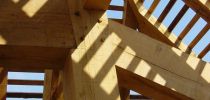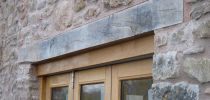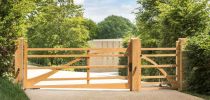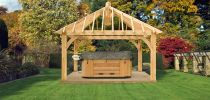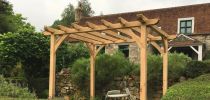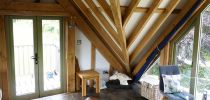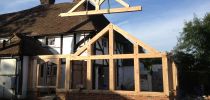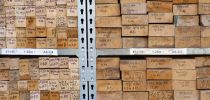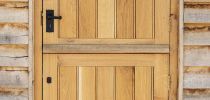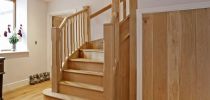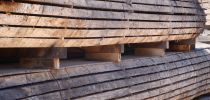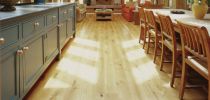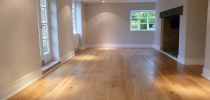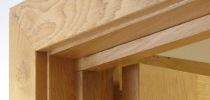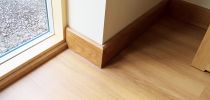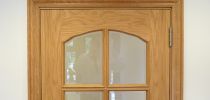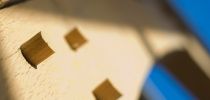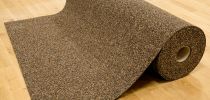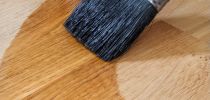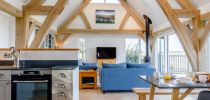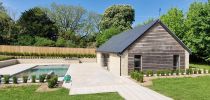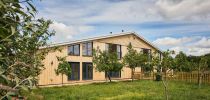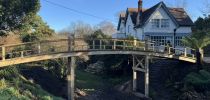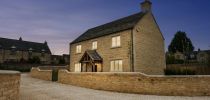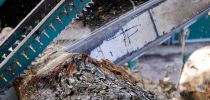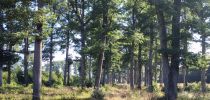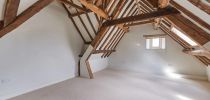

General
The World of Woodworm
The types, the effects and the strategies to combat this persistent menace!
6th November 2023
Woodworm infestations are a persistent threat that can wreak havoc on wooden structures and furniture, and even the resilient oak is not immune to their destructive tendencies! In this article, we dive into the world of woodworm, examining the various types, looking at their specific impact on oak, and uncovering effective strategies to combat this persistent menace!
Types of Woodworm
Woodworm is a collective term that covers a range of wood-boring insects, each with its own distinctive characteristics and impact. Among the notable types are:
.jpg) |
Common Furniture Beetle (Anobium Punctatum): This prevalent wood-boring insect is known for its wide distribution. Its larvae create an intricate network of tunnels that lie just beneath the surface of the wood. As they mature into adult beetles, they exit through tiny round holes, leaving behind evidence of their presence. |
.jpg) |
Deathwatch Beetle (Xestobium Rufovillosum): Often found within historic buildings, this beetle's impact is notable for the larger, irregular exit holes and tunnels it leaves behind. The name "deathwatch" originates from the distinct ticking sound these beetles make, which was historically believed to foretell impending death. |
.jpg) |
House Longhorn Beetle (Hylotrupes Bajulus): Preferring softwoods, these larger beetles can cause considerable structural damage due to their affinity for moist environments. Their extensive tunnelling weakens the timber, posing serious risks to the integrity of wooden structures. |
.jpg) |
Powderpost Beetle (Lyctus Brunneus): Targeting hardwoods such as oak, this beetle's larvae bore into the wood, resulting in the accumulation of a distinctive powdery substance called frass. |
Impact on Oak
While oak is known for its strength and durability, it's not immune to the damage caused by woodworm infestations. These small wood-boring insects, in their larval stage, can have significant negative effects on oak, affecting both its structural integrity and visual appeal.
Structural Weakening: Woodworm larvae create tunnels within the oak, weakening its internal structure. This compromises the overall strength of oak beams, furniture, and architectural elements, making them more susceptible to damage and decay.
Aesthetic Degradation: As adult woodworm beetles emerge from these tunnels, they leave behind small exit holes. These holes not only spoil the appearance of oak surfaces but also diminish their natural charm and market value.
Heritage Sites and Historical Significance: In the context of historical buildings and heritage sites, woodworm infestations can be particularly problematic. The damage inflicted by these pests can compromise the authenticity of these structures and pose a threat to their historical significance.
Dealing with Woodworm Infestations
Tackling woodworm infestations effectively involves a well-rounded approach including prevention, early detection, tailored treatment, and ongoing preservation efforts.
Prevention: Preventing woodworm infestations begins with proper construction and renovation practices. Ensuring that wooden structures are thoroughly dried and sealed is essential. Creating an environment with lower humidity and good ventilation also discourages wood-boring insects from setting up camp.
Identification: Regular inspections are key to catching woodworm infestations early. Keep an eye out for signs like tiny holes, powdery frass (i.e. insect waste), and weakened wood. Identifying the type of exit holes can provide valuable insights into the specific wood-boring insect responsible.
Treatment: The severity of the infestation determines the right treatment strategy. For serious infestations, it's wise to seek professional help from pest control or conservation experts. They may use various methods such as targeted insecticides, fumigation, or heat treatments to eliminate larvae and prevent future infestations.
Preservation: To proactively guard against future woodworm attacks, consider using wood preservatives. Consistent maintenance and vigilant monitoring are also crucial for preventing reoccurrences and ensuring the long-term health of wooden structures.
All oak that arrives on our yard is thoroughly inspected for woodworm before being booked into stock, and if any traces of infestation are found, the timber will be rejected. This ensures that we eliminate the risk of any live invasion that could quickly spread though our stockholding.

